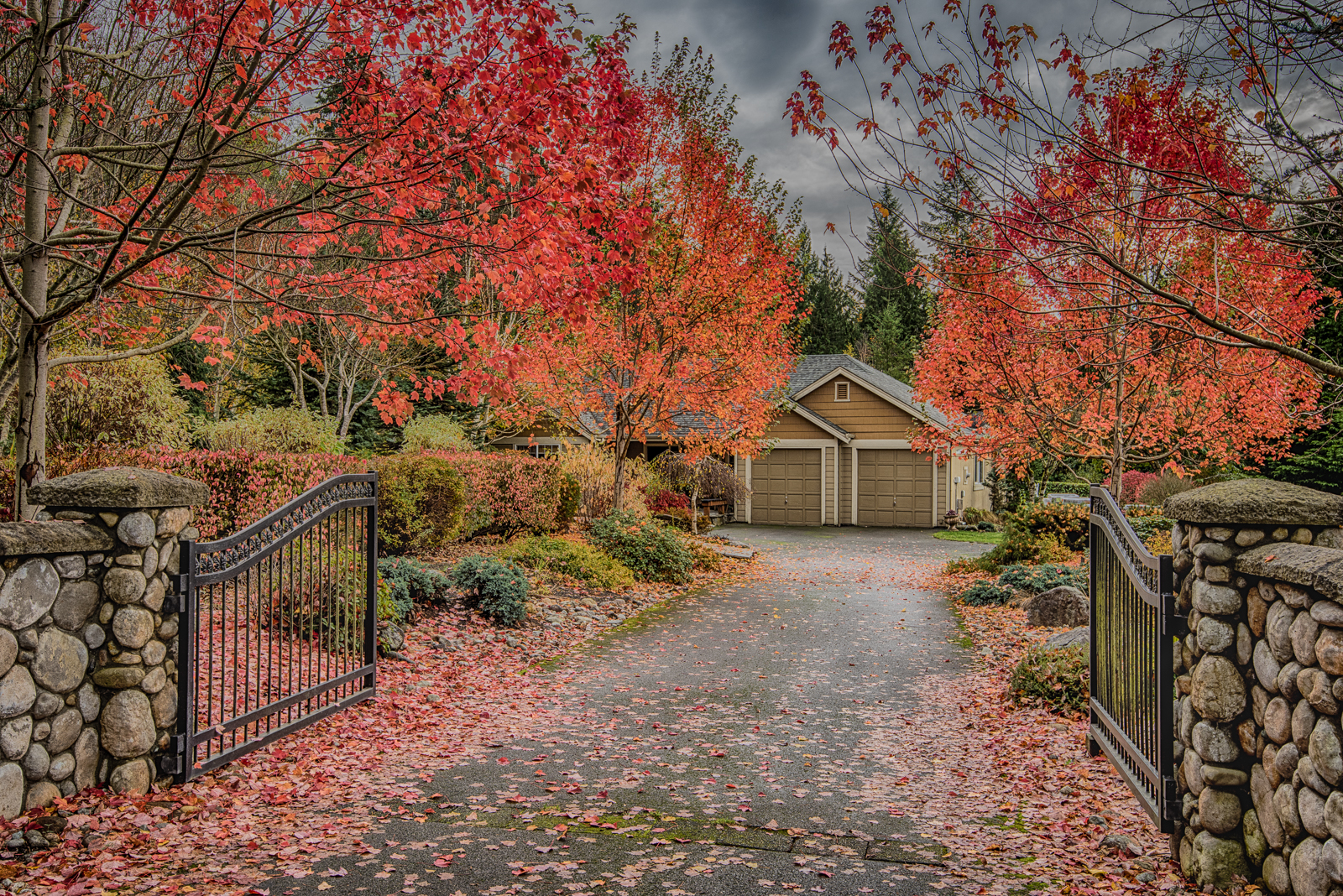
The leaves have begun to fall and autumn is here. To get the best thick, green, and healthy lawn in the spring you need to care for your lawn now. According to Scott Firth, CEO of Lawn Doctor, most homeowners don’t take the necessary steps in the fall to ensure a beautiful spring lawn. Here are seven tips from Firth to make sure next year’s lawn is greener and healthier than ever!
- Remove the leaves.
- Keep cutting, but to the correct height.
- Continue watering.
- Loosen the soil.
- Add fertilizer.
- Spread seed.
- Stay on schedule.
A carpet of colorful autumn leaves may look nice and be fun to play in, but they’re no good for grass. They block the light and trap moisture, potentially fatal knockout punches for the unlucky turf underneath. So when the leaves are falling, blow or rake them away as often as you can. Even after the trees are bare, continue raking out the corners where the wind piles leaves up. If you don’t, come spring the grass under that soggy, decaying mat will be dead.
Don’t put that mower away yet. Grass continues to grown up to the first hard frost, and so will need regular cuts to keep it at an ideal 2½- to 3-inch height. If you let it get too long, it will mat and be vulnerable to fungi like snow mold. Cutting grass too short is just as bad, because it curtails the root system—root depth is proportional to cutting height—and impedes the lawn’s ability to withstand winter cold and dryness. Regular mowing also gets rid of those pesky leaves, chopping them up and leaving behind a soil-enhancing mulch.
Frith says that people tend to let up on watering in the fall as the weather gets cooler. “They figure that nature will take care of things for them,” he says. While it’s true that there’s more rain, more dew, and less evaporation at this time of year, that may not be enough to keep the grass roots well hydrated and healthy going into the winter. If your lawn isn’t getting at least an inch of water a week—a simple rain gauge is a useful way to keep track—then keep the sprinklers or irrigation system running until the end of October. By that time, you’ll want to disconnect hoses and flush the irrigation system to avoid frozen pipes and spigots.
Regular aeration—once every couple of years, according to Frith—prevents soil from becoming compacted and covered with thatch, a thick layer of roots, stems, and debris that blocks water, oxygen, and nutrients from reaching the soil. A core aerator corrects both problems by punching holes through that thatch and pulling up plugs of soil. “It’s a good idea to aerate a lawn right before fertilizing,” Frith says. “All those holes in your turf will let the fertilizer reach right to the roots, where it can do the most good.”
Just as grass roots need water to last the winter, they also benefit from a shot of the plant sugars that protect roots from freezing and give the entire plant the energy to bounce back in the spring. Those sugars are produced by chlorophyll, which grass produces in abundance when there’s enough nitrogen. That’s why Frith recommends a late-fall application of a slow-release granular 24-0-10 fertilizer. The numbers indicate the percentage by weight of nitrogen, phosphorus, and potassium, respectively. Potassium is also important at this time because it aids in root growth, disease protection, drought tolerance, and cold resistance. (A soil test can tell you how much of each nutrient your lawn actually needs.) Frith cautions against spreading fertilizer close to waterways, however; they are vulnerable to contamination from runoff. Lawn Doctor’s company policy is to maintain a 5-foot buffer wherever water is present.
“A dense lawn also is good protection against weeds,” Frith says, which is why it’s important to overseed existing turf. Not only does that fill in thin spots or bare patches, it allows you to introduce the latest in resilient, drought-tolerant grasses. Fall is the best time to overseed because the ground is still warm, moisture is more plentiful, nights are cool, and the sun is not as hot during the day. But even then, “overseeding is one of the most challenging lawn-care chores,” Frith says. You can’t simply broadcast seeds over an established lawn and expect them to take hold. They need to be in full contact with the soil, kept moist until they germinate, and be well enough established before it gets too cold. Renting a slit seeder is a better option than broadcasting, but those machines are notorious for tearing up turf and leaving your lawn looking like a harrowed field. Frith says that Lawn Doctor’s proprietary Turf Tamer power seeder, which sows seeds by injecting them into the soil, is a less-damaging option.
Each of the steps above has to be done at the right time for best results. Otherwise, it’s wasted effort. For instance, overseed too late and the seedlings will be too tender to survive. Fertilize too early and the grass will send up tender blades that will get hammered by the cold. Fertilize too late and the grass roots won’t be able to absorb all those nutrients you’re feeding them. Thinking about aerating in the spring because you can’t get around to it this fall? Don’t bother. Spring aeration just makes it easier for weed seeds to get established.
These are some tips to take to heart if you are considering selling your home this spring. If you want to make sure you are doing everything you can for your lawn now in preparation for a spring listing, click the button below and we will connect you with a lawn care specialist.

